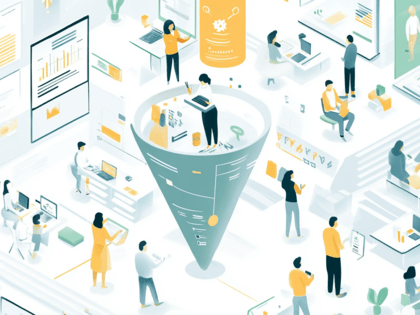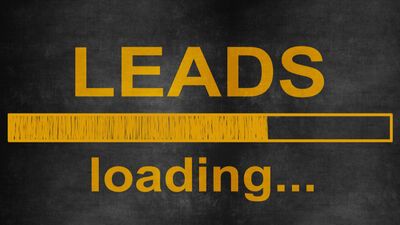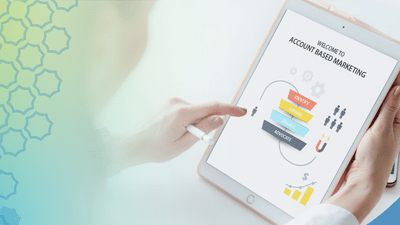Fix Your Digital Marketing Funnel: Identify Leaks & Improve Conversions

- Identify and address common drop-off points in the marketing funnel with targeted strategies such as CRO.
- Make sure your homepage clearly communicates your company's offerings within seconds to avoid losing potential customers.
- Use split testing and automation tools to optimize lead-nurturing processes.
- Develop clear messaging aligned with complete buyer personas for better audience engagement.
- Optimize each stage of the funnel with tailored strategies, from awareness to decision-making.
- Implement workshops and KPI frameworks for continuous improvement in marketing efforts.
Most teams build a digital marketing funnel with the best intentions. But when results fall short, they’re left guessing which part broke. Is it the messaging, the timing, or the follow-up? Without clear answers, marketing feels more reactive than strategic.
In our recent Growth Gears podcast episode, we dug into how to fix funnel marketing. From missed CTAs to unclear buyer intent, the key isn’t just plugging leaks, it's designing every digital marketing funnel stage with purpose.
Finding and Fixing Common Drop-Off Points in Your Digital Marketing Funnel
Most people who enter your digital marketing funnel won’t convert right away. That’s expected. But some of that drop-off is preventable.
A common leak happens right at the start: Someone lands on your homepage but still doesn’t know what your company offers. If it’s not clear within a few seconds, they move on. A plain explanation, a strong CTA, and a clear next step can keep potential customers engaged.
And that's exactly it. Conversion rate optimization isn’t a magic trick, it’s a focused effort to fine-tune the online experience you provide for your visitors. Small changes, copy, layout, CTAs, can make a big difference over time.
Some visitors are curious but still hesitate:
- They have unanswered questions
- They want to negotiate or learn more
- They don’t see enough proof that it works
If your message is unclear or your site lacks trust signals, even the right audience won’t convert. Maybe they liked your offer, but without real examples or reviews, it’s hard to feel confident.
“Maybe they discover the brand, but within the first five seconds they don’t know what the company actually does. It’s florid marketing messaging or something that doesn’t resonate... there are all kinds of things that can prevent people from converting.”
Using Split Testing and Automation to Fill Gaps
That’s where two essential systems come in: split testing and automation. On their own, they’re powerful. Together, they’re how you identify exactly where the funnel is leaking, and what to do about it.
Split Testing
Most marketing problems are diagnosed too late, or based on gut feeling. Split testing (A/B testing) brings data into the picture, no guessing. You test different versions of your page, emails, or call-to-actions to see what actually drives results.
Here’s what it can uncover:
- Is your headline clear and relevant, or just clever-sounding fluff?
- Does the hero section tell people what you do within five seconds?
- Is the CTA button getting ignored because of weak wording or low contrast?
- Does the testimonial placement build trust, or is it buried too far down?
Even small tweaks, like rewording a subheading or moving a social proof block higher, can lead to meaningful lifts in engagement.
Marketing Automation
Split testing fixes what’s broken on the surface. Automation fixes what’s missing behind the scenes, especially for leads who don’t convert right away. Marketing automation steps in to bridge that gap:
- An email flow that picks up where the landing page left off
- A chat message triggered by scroll depth or inactivity
- A product reminder or testimonial after they visit your pricing page
It’s not about flooding people with follow-ups. It’s about timing. Well-designed automation delivers the right message to the right person, at the right moment, without you doing it manually every time.
When used together, split testing and automation create a feedback loop:
- You test to learn what works
- You automate to scale what works
- You adjust based on results
- You get clearer, faster, and better at converting interest into action
That’s how you stop guessing and start optimizing every part of the digital marketing funnel.
Fragmented marketing is costing you, whether you see it or not.
Most businesses feel the symptoms but can’t trace the cause. This quiz helps you spot exactly where things are falling apart.
Speak Their Language: Build Messaging That Clicks with Complete Personas
Depending on your industry, whether you're building a B2B or B2C marketing funnel, and the channel you're using, Google Ads, email, or social media marketing, your target audience will respond to different messaging.
A campaign that works for direct-to-consumer might flop in a high-consideration B2B setting. That’s why your message has to match your funnel, your traffic source, and your buyer’s mindset.
Creating Buyer Personas
Start by gathering data about your existing customers and prospective customers. This can include demographic information, buying behaviors, and preferences. Surveys, interviews, and analytics tools can provide valuable insights into your audience's motivations and challenges.
Once you have a clear picture of your typical customer, create buyer personas that represent various segments of your audience. Each persona should include:
- Demographics: Age, gender, location, and occupation.
- Goals: What they hope to achieve with your product or service.
- Challenges: Common pain points or obstacles they face.
- Preferred Communication Channels: How they prefer to receive information (e.g., email, social media, etc.).
Crafting Targeted Messaging
The next step is having your digital marketers deliver messages that target their priorities, problems, and pain points. For example, if one segment cares about cutting costs, your messaging should highlight pricing transparency, ROI, or cost-saving results. If another group is more focused on reliability, lean into proof points like uptime guarantees or customer support.
Use their words, not yours, pull language from customer testimonials, surveys, support chats, or reviews to make your content feel familiar and direct.
The goal is to show that you understand their world, not just push your product. When your message reflects what they’re actually thinking about, it’s far more likely to move them forward in the sales funnel.
Aligning Messaging Across Channels
Ensure that your messaging is consistent across all marketing channels. Whether it's your website, social media, or email marketing campaigns, maintaining a unified voice and message helps reinforce your brand's identity and builds trust with your audience.
This doesn’t mean copying and pasting content, but making sure the tone, offer, and message feel connected. When everything lines up, it’s easier for people to trust you and know what to expect.
Nurturing Leads the Smarter Way With Marketing Automation
Generating leads is just the beginning; nurturing these leads through digital marketing funnels is key to transforming them into paying customers. Marketing automation is crucial in this process, helping to streamline and enhance your interaction with potential customers.
Customer Relationship Management software like HubSpot allows you to automate repetitive tasks such as email campaigns, social media engagement, and website actions. This not only saves time but also ensures a consistent and personalized experience for each potential customer.
Creating Effective Automated Campaigns
- Segment Your Leads: Use data points such as location, industry, and behavior to categorize your leads. This helps in sending personalized content that addresses specific needs.
- Design Drip Campaigns: Develop a series of automated emails that guide leads through the decision-making process. Start with valuable content and gradually introduce more product-specific messages as they move down the funnel.
- Monitor Engagement: Use analytics to track how leads interact with your content. This data can help refine your marketing campaign and improve its effectiveness over time.
By implementing marketing automation, companies can experience a substantial increase in the quality of their leads, often seeing up to a 451% boost in qualified leads. A focus on nurturing rather than just acquiring leads enhances conversion rates and drives better results across your marketing efforts.
"Good marketing is based on systems primarily. And if you don’t have a system... you’re going to be missing a lot of people in that funnel."
- Thomas Paul, Fractional CMO, O8
Optimizing Strategies for Each Funnel Stage
To improve conversion rates, it's important to understand the different stages of the marketing funnel and apply strategies tailored to each. Here's a guide to effective tactics at every stage of the digital marketing funnel:
1. Awareness Stage
At this stage, the goal is to capture attention and introduce potential customers to your brand:
- SEO and Content Marketing: Use search engine optimization (SEO) to help your content appear in search results. Create content that answers questions and solves problems, establishing your brand as a helpful resource.
- Social Media Marketing: Use any social media platform to help you reach a broad audience. Share content that is both informative and engaging to enhance brand awareness and attract followers.
Quick note: brand awareness, consideration, and conversion haven’t disappeared; the fundamentals of full funnel marketing haven’t died, they've just evolved. What people call ‘old digital marketing funnel’ or the ‘traditional marketing funnel’ still forms the backbone of how customers move from interest to action.
2. Consideration Stage
Once people know about your brand, the next step is to convince them that you offer the best solution:
- In-Depth Content: Provide detailed information to help prospects evaluate your offerings. This might include comparison guides, case studies, or content marketing pieces that showcase your strengths.
- Email Marketing: Use targeted email marketing to nurture leads. Personalized emails with valuable insights or special offers keep your brand in mind.
3. Decision Stage
At this point, the focus is on making the purchase process as simple as possible:
- Clear CTAs and Checkout Process: Make sure calls to action are obvious and easy to follow. Simplify the checkout process to reduce friction and prevent abandoned carts.
- Trust Signals: Display customer reviews, testimonials, and security badges to build trust and encourage purchases.
4. Retention and Advocacy
After the purchase, your focus should shift from conversion to customer retention. This is where effective marketing funnels extend beyond just acquisition, and where your efforts in digital marketing continue to pay off.
Keep Showing Up
Use content marketing, follow-ups, and simple loyalty perks to keep your existing customers engaged. Just because they bought once doesn’t mean they’re locked in.
Ask, Listen, and Improve
Check in. What did the experience feel like? Where could it be better? This isn’t just about tweaking your process, it’s about showing your loyal customer that their opinion matters.
Engage Your Best Brand Advocate
A brand advocate doesn’t just appear. You create the conditions. Make it easy for a happy customer to leave reviews, share their experience, or refer someone else. This builds credibility at every stage of your sales funnel.
Loop Insights Back to the Top
What you learn from your existing customer helps you refine messaging for the prospective customer at the top of the funnel. This is what closes the loop between awareness, consideration, and retention, the full spectrum of your marketing funnel stages.
Because a marketing and sales funnel that ends at the sale isn’t a funnel, it’s a leak. The real ROI comes from building relationships after the conversion.
Getting Leadership Buy-In For Conversion Rate Optimization (CRO)
Conversion rate optimization is about making better use of the traffic you already have. Instead of chasing more clicks, it helps turn visitors into customers by improving what’s already in front of them. That might mean fixing a confusing form, rewriting a headline, or making a page load faster.
Something we mentioned during the podcast was that your C-level suite might not understand why you’re pushing for tactics like CRO when they’ve already invested thousands in a web design. That hesitation is common and understandable.
To move the conversation forward, it helps to connect CRO to outcomes leadership already values:
- A smoother customer journey leads to more purchases, signups, or inbound leads
- Faster load times lead to reduced bounce rates
- Cleaner messaging leads to increased trust and return visits
In other words, CRO is a marketing tactic that multiplies revenue. It makes sure the money you’re already spending and your online marketing funnel are converting into results. But it still needs regular testing as well as small, data-informed updates, you keep your digital marketing funnel performing long term.
Continuous Improvement through Workshops and KPI Frameworks
“Before you even talk about improvement, you need to know what you're targeting.”
- Zachary Ellison, CMO, O8
Most companies jump straight into “what’s not working”, but without a clear view of the full funnel, you're solving in the dark. That’s why we recommend starting with a workshop: not a brainstorming session, but a structured review of your digital marketing funnel from end to end.
Here’s what a typical workshop includes:
1. Map Every Touchpoint
From awareness to action, chart how a potential customer moves through your funnel. Use visual tools like Miro or Lucidchart, to break it down:
- Where do people first discover you?
- What happens between their first click and becoming a lead?
- What points of friction delay the sale or kill it altogether?
Mapping it visually turns your funnel from an abstract concept into something you can analyze, fix, and improve. Without a clear view of how each stage connects, funnel marketing efforts tend to focus too heavily on top-of-funnel traffic while ignoring mid- and bottom-funnel gaps.
2. Identify Every Customer Touchpoint
Your customer journey is shaped by every interaction across every channel. Capture:
- Paid campaigns (Google Ads, Facebook, LinkedIn)
- Organic touchpoints (blogs, SEO content, TikTok, Instagram)
- Email nurturing flows and landing pages
- On-site CTAs, demos, pricing pages
- Post-sale engagement and referrals
- Without this full picture, you're optimizing in silos, and missing out on growth.
3. Conduct a Target Audience Analysis
This is where your marketing efforts meet real-world behavior. Ask:
- Who are your actual customers (not personas, real data)?
- What content do they engage with at each stage of the funnel?
- What are their objections, priorities, and buying triggers?
- How does their behavior shift across B2B vs. B2C, or high-ticket vs. low-ticket?
Effective funnel marketing means aligning your message and offer with the specific mindset of your potential customer at each stage: awareness, consideration, and decision.
4. Run a Tech Audit + Gap Analysis
You might have all the tools, but are they integrated and optimized? Even the most experienced digital marketer can overlook performance gaps when tools aren’t integrated or KPIs aren’t aligned across funnel stages.
- Is your marketing automation system personalized or just blasting?
- Are analytics, CRM, and ad platforms talking to each other?
- Are there manual steps slowing you down, or opportunities to use AI?
- This step identifies where performance drops due to clunky systems or wasted tools.
5. Evaluate Roles and Responsibilities
Funnel optimization fails when nobody owns the gaps. Use the workshop to clarify:
- Who owns each stage of the funnel?
- Where do handoffs happen (marketing → sales → retention)?
- Are responsibilities aligned with actual goals?
Real improvement requires operational clarity, not just better copy. Businesses using proper sales funnel strategies see a 15–20% boost in marketing ROI, which makes structured analysis and alignment through workshops a high-impact investment.
6. Review Budget Allocation
Where your budget goes should match where your impact comes from. Use this moment to:
- Reallocate funds from high-cost, low-return channels
- Double down on what drives conversions
- Measure spend by funnel stage and tactic for clearer marketing ROI
7. Build a Full-Funnel KPI Framework
Once gaps and opportunities are identified, a robust KPI framework helps track progress and measure success. A well-structured KPI framework includes:
- Defining Metrics: Identify key metrics that align with your marketing goals, such as conversion rates, customer acquisition costs, and customer lifetime value.
- Setting Benchmarks: Establish benchmarks to measure against future performance. This provides a clear picture of what success looks like and helps in setting realistic goals for your digital marketing strategy.
Why Continuous Improvement Pays Off
When you hold regular workshops and keep your KPI plan up to date, your team stays focused and flexible. You can catch what’s working, fix what’s not, and avoid falling behind.
- Clear communication and alignment across teams ensure that everyone is working towards the same objectives, leading to more cohesive online marketing efforts.
- A proactive approach allows businesses to quickly adapt to changes in the market or customer behavior, keeping the digital marketing funnel effective and relevant.
- By continuously refining strategies based on data and insights, businesses can achieve higher returns on their marketing investments.
"You need to develop a KPI framework that goes through this whole thing... for you to actually have continuous improvement, you need to have that initial setup."
- Zachery Ellison, CMO, O8
Conclusions
When built strategically, digital marketing funnels are pathways and systems for sustainable growth. It takes regular tuning, testing, refining, and listening to what your customers are telling you at each stage.
When you break it down step by step, keep your messaging clear, and track what matters, it gets easier to turn interest into real results. And when something's off, you’ll be ready to fix it fast.
Want more insights like this?
Listen to the full episode and subscribe for expert insights on holistic marketing. Or browse all our episodes here.
We'll Help You Spot What’s Slowing Down Your Funnel
Contact us today to map your digital marketing funnel with you, identify the drop-offs, and turn missed opportunities into measurable growth








